Mistra Battery
The first plans to construct a battery at Mistra Bay were made in 1714, in the report prepared by the Commissioners of Fortifications Fontet and D’Arginy. In fact, the Knight Mongontier donated 133 scudi for its construction. However, the Mistra Battery does not appear in the 1715-1716 list of coastal fortifications, but possibly a gun platform was built some years later.
In fact Maigret’s report written in 1716 does not mention this battery. Probably
the battery was built in 1761 on the insistence of the French military engineer Bourlamaque during the reign of Grand Master Manoel Pinto de Fonseca. During this time there was a small revival in the building of new coastal fortifications, including new coastal batteries. Bourlamaque insisted to build a coastal battery at Mistra.
Apart from proposing new coastal fortifications along the coastline of Mellieħa, the same military engineer proposed also how can be defended better. The proposed artillery necessary for the defence of the Coasts of the Islands of Malta and Gozo consisted of artillery of various calibres and types. The following is a table showing the necessary artillery for a better defence of the new battery at Mistra:
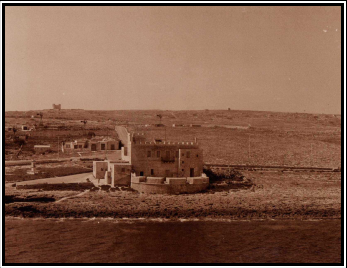
An aerial view of Mistra Battery. Notice the gun platform, the two blockhouses and part of the redan with the loopholes (Source: DOI)
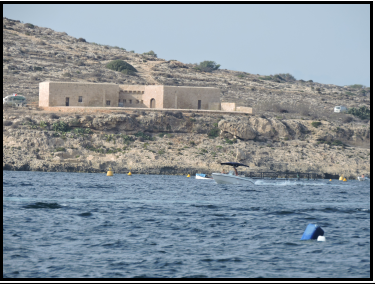
A sea view of Mistra Battery. Notice the two blockhouses, the parapet with the embrasures (right), part of the redan with the loopholes and the passageway on top of the same redan for sentinels or for musketry fire.
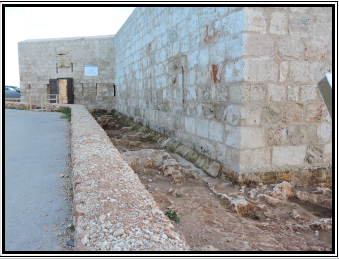
Part of the right-side rear blockhouse, the dry ditch and one side of the redan with the door and just above it the coat-of-arms and the drawbridge.

The main entrance consisting of two doors. Above the entrance there is the coat-of-arms of Bailli de Montagnac and Grand Master Manoel Pinto de Fonseca. At least three musketry loopholes are seen.
Mistra Battery consists of a large semi-circular artillery platform surrounded by a three quarters of a low parapet and a quarter of a higher parapet with three embrasures, overlooking the mouth of St. Paul’s Bay. The battery is surrounded with a dry ditch. At the rear of the battery there are two blockhouses and on the landward side of the walls there are a number of musketry loopholes to cover the inland approaches. The blockhouses are linked with a redan. It is interesting to note that the redan is fitted with an upper walkway for the sentinels stationed in this battery. One can immediately recognise that the idea of this walkway is similar to that of the bastions. In the redan there is the door where was there was a small drawbridge over the ditch. Over the door there is the coat-of-arms of Bailli de Montagnac and Grand Master Manoel Pinto de Fonseca, thus bringing one to the conclusion that this battery was built during his
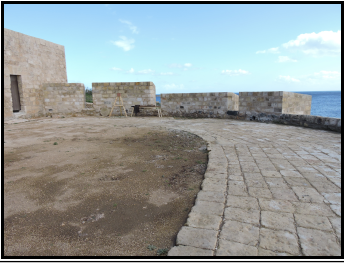
Part of the semi-circular gun platform and the three embrasures facing to the mouth of St. Paul’s Bay.
On 4 October 1769, the Congregation of War made a report about the actual situation in the coastal fortifications, in terms of artillery pieces. The report showed how the coastal fortifications, including those of Mellieħa had been depleted in regarding artillery pieces. The following is the report about the Mistra Battery:
Mistra Battery
Now remain only one 8-pdr and the utensils remain for the six cannons that was armed with.
A year later, there was still one 8-pdr to defend the battery. However, this cannon was to be replaced by five 24-pdrs. The following is the list of how Mistra Battery was equipped:
Mistra Battery
Iron Cannons of 8-pdr = 1
Cannons of 24-pdr to be added = 5
Iron cannon balls 24-pdr to be added = 70
Grape shot of 24-pdr to be added = 15
An artillery inventory was prepared by the Knight St. Felix on 3 October 1785, which showed the situation in the same coastal fortifications and how many pieces of artillery and other utensiles and necessary items they had. The following is the list of artillery pieces in Mistra Battery:
Mistra Battery
No cannons
In early November 1792, a number of artillery pieces of different calibre were distributed in various coastal fortifications, some of them in the coastal fortifications of Mellieħa. The following list the coastal fortification, the calibre of the guns and their number:
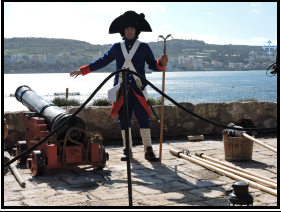
On 5 November 1792, the Congregation of War ordered that four mortars to be send from Valletta, and one to be positioned at L-Aħrax Battery. It ordered also guards to be sent to the following coastal fortifications of Mellieħa:
More reinforcements were ordered for Mellieħa coastal fortifications and the Congregation of War ordered more guards to the following fortifications:
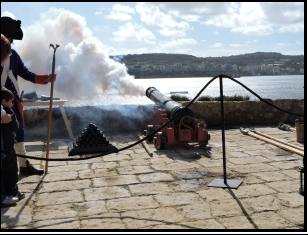
During the French blockade of 1798-1800, all cannons found in Mistra Battery were removed by the Maltese insurgents, and taken to Għargħar Battery.
In the 1990s the battery was used as a store by P2M Fisheries, and a number of alterations were made, in which some parts of the battery were destroyed. The fisheries company obtained new premises in 2012 and restored the battery before returning it to the government. Despite this, the battery and the surrounding area was vandalized repeatedly. More restoration works were undertaken by Fondazzjoni Wirt Artna.